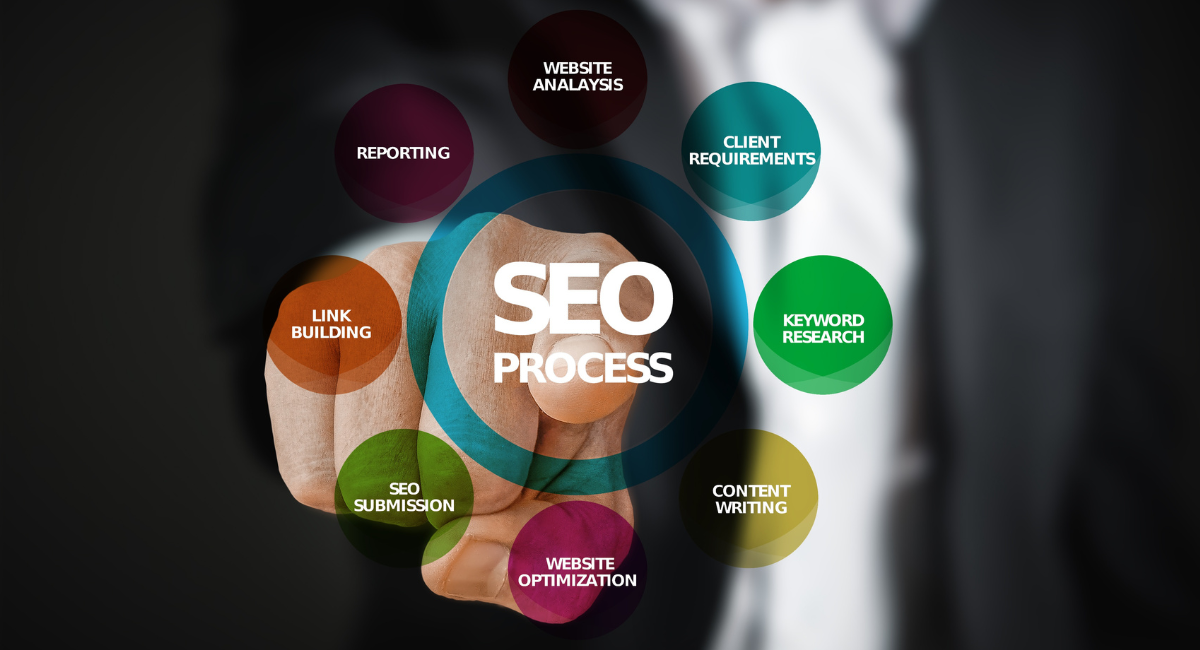Are you curious about how Google ranks websites? Do you want to learn more about the mysterious world of SEO? You’ve come to the right place! In this beginner’s guide, we will walk you through what SEO is, how it works, and its different types. We’ll also discuss the pros and cons of using it for your business or personal website. By the end of this article, you’ll have a solid understanding of SEO basics and be ready to start optimizing your own site. So grab a cup of coffee, sit back, and let’s dive in!
What is SEO?
SEO stands for Search Engine Optimization, which is the practice of optimizing your website to rank higher in search engine results pages (SERPs). In other words, it’s the process of improving the visibility and ranking of a website in organic search results.
The goal of SEO is to increase traffic to a website by making it more visible on SERPs. This involves optimizing various elements on your website such as content, meta tags, backlinks, and keywords.
SEO can be divided into two broad categories: On-page SEO and Off-page SEO. On-page SEO refers to all the optimizations you do directly on your web page like title tag optimization, keyword density management, etc., while off-page SEO includes link-building tactics such as guest posting or social media outreach.
If done correctly, implementing good SEO practices can lead to increased traffic volume and quality leads for businesses. However, it requires time and effort because proper research must be conducted before any action is taken.
How Does SEO Work?
SEO works by optimizing websites for search engines. This involves a combination of on-page and off-page optimization techniques that improve the website’s ranking in search results. On-page optimization includes optimizing content, HTML structure, and other technical aspects of the webpage to make it more appealing to both users and search engine robots.
Off-page optimization includes building high-quality backlinks from relevant websites, social media marketing, and other techniques designed to increase the website’s authority in its niche or industry. By doing this, search engines are able to recognize that the site is an authoritative source of information and rank it accordingly.
SEO also involves keyword research which helps identify what keywords should be targeted in order to attract traffic from organic searches. These keywords are then strategically placed throughout the website’s content so that they can be easily found by search engines.
In addition to these tactics, SEO also requires constant monitoring and adjustments as algorithms change over time. However, with proper implementation of SEO strategies businesses can gain long-term visibility online resulting in increased traffic and revenue opportunities.
The Different Types of SEO
When it comes to SEO, there are different approaches that businesses can take. The type of SEO used often depends on the website’s goals and target audience.
Firstly, there is on-page SEO which involves optimizing individual web pages in order to rank higher and earn more relevant traffic. This includes optimizing elements such as content, HTML structure, meta tags, and images.
Secondly, off-page SEO focuses on activities done outside of your own website to improve your search engine rankings. This includes backlink building from reputable websites and social media marketing efforts.
Local SEO also plays an important role for businesses with a physical location or brick-and-mortar store. It helps local customers find their business through online directories like Google My Business.
Technical SEO ensures that a website meets certain requirements necessary for search engines to crawl and index its content efficiently. Technical aspects include site speed optimization, mobile responsiveness testing, and structured data markup implementation.
Understanding the different types of SEO can help businesses maximize their online presence by using the right strategies for their specific needs.
Pros and Cons of SEO
Pros and Cons of SEO:
SEO, or Search Engine Optimization, is a powerful tool for businesses looking to increase their online visibility. But like any marketing strategy, it comes with its own set of advantages and disadvantages.
On the plus side, SEO can be incredibly effective at driving traffic to your website. By optimizing your site for search engines like Google and Bing, you can improve your rankings in organic search results and attract more visitors who are interested in what you have to offer.
Another benefit of SEO is that it’s relatively inexpensive compared to other digital marketing tactics. While there may be some upfront costs associated with optimizing your site and creating content, once you’ve achieved good rankings, you’ll continue to benefit from increased traffic without having to pay for every click.
However, there are also some potential downsides to consider. One challenge of SEO is that it can take time to see results. Unlike paid advertising where you can start seeing clicks immediately after launching a campaign, SEO requires patience as search engines crawl your site and index changes over time.
Another con of SEO is that it’s constantly evolving. What works today may not work tomorrow as search algorithms change or new competitors enter the market. This means that businesses need to stay on top of trends in order to maintain their rankings over the long term.
While there are certainly challenges associated with implementing an effective SEO strategy, the benefits make it well worth considering for any business looking to grow its online presence.
What Are the Benefits of SEO?
SEO or Search Engine Optimization is a powerful tool that can help businesses improve their online visibility and reach their target audience effectively. Here are some of the benefits of SEO:
1) Increased Website Traffic: With an effective SEO strategy, you can drive more organic traffic to your website, which means better chances for lead generation and conversions.
2) Improved User Experience: A well-optimized website with high-quality content and relevant keywords can provide a better user experience for visitors by making it easy to navigate and find what they’re looking for.
3) Better Brand Awareness: By ranking higher on search engines, businesses can establish themselves as authorities in their respective industries, thus improving brand awareness among potential customers.
4) Cost-Effective Marketing: Unlike traditional marketing methods like TV or radio ads, SEO is relatively inexpensive and offers long-term results without breaking the bank.
5) Competitive Edge: Investing in SEO provides a competitive edge over other businesses that have yet to adopt this strategy. It’s vital to stay ahead of the curve in today’s fast-paced digital landscape.
The benefits of SEO go beyond just improving rankings. It’s about creating a seamless user experience while establishing authority in your industry through cost-effective marketing strategies.
How to Get Started with SEO
Getting started with SEO can be overwhelming, especially for beginners. However, it is a critical component of any successful website strategy. Here are some actionable steps to take when getting started with SEO.
Firstly, conduct keyword research to identify the phrases and terms that your target audience is searching for online. Using tools like Google Keyword Planner and SEMrush can help you find relevant keywords.
Next, optimize your website’s on-page elements such as title tags, meta descriptions, header tags, and content around those keywords identified in the earlier step.
It’s also important to ensure that your website has a clear hierarchy structure that enables search engines to easily crawl through your site content without missing any pages or links.
Furthermore, building high-quality backlinks from other authoritative websites in your niche can boost traffic and authority signals of your own site.
Stay updated on changes made by search engine algorithms by reading blogs dedicated to SEO knowledge-sharing sites like Moz.com or NeilPatel.com. This will enable you to adjust the strategies applied according to current trends while avoiding penalties caused by outdated practices.
Conclusion
SEO is an essential aspect of any online business or website. It helps to improve the visibility and ranking of a website on search engine result pages, which ultimately leads to increased traffic and revenue.
As explained in this beginner’s guide, there are different types of SEO that one can focus on depending on their needs and goals. However, it’s important to note that SEO is not a one-time process but rather requires constant updates and improvements.
Getting started with SEO may seem overwhelming at first, but with the right resources and strategies, anyone can learn the basics and start implementing them for their website or business.
It’s crucial to keep up-to-date with the latest trends and changes in search engines’ algorithms so that your efforts remain effective. With consistent effort and patience, you’ll see positive results in no time!





